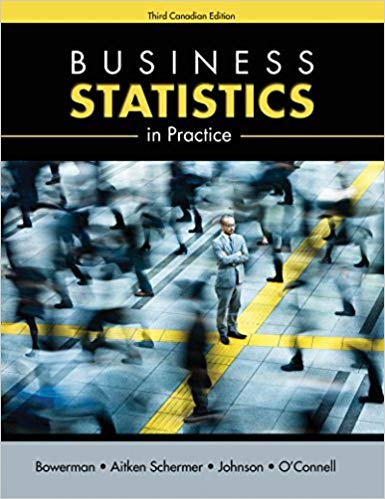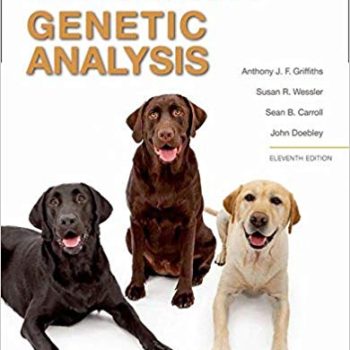Solution Manual for Business Statistics in Practice Third Canadian Edition
Digital item No Waiting Time Instant DownloadISBN-10: 0071339604 ISBN-13: 978-0071339605Publisher : McGraw-Hill RyersonAuthors: Bruce L. BowermanEdition : 3rd
Solution Manual for Business Statistics in Practice Third Canadian Edition
INSTRUCTOR’S SOLUTION MANUAL
Business Statistics in Practice, Third Canadian Edition
by
Bowerman, Aitken Schermer, Johnson, & O’Connell
CHAPTER 1: An Introduction to Business Statistics
1.1 [LO 1]
A population is a set of units.Examples could include surveying consumers utilizing a particular product.
1.2 [LO 1]
Any characteristic of a population unit is called a variable.Quantitative: values on the real number line.Qualitative: record unit into categories.
1.3 [S 1.1]
a. Quantitative; dollar amounts correspond to values on the real number line.
b. Quantitative; net profit is a dollar amount.
c. Qualitative; rank is ordinal.
d. Quantitative; national debt is a dollar amount.
e. Qualitative; media is categorized into radio, television, or print.
1.4 [LO 2]
Census: examine all of the population units.Sample: subset of the units in a population.
1.5 [LO 3]
a. Descriptive statistics: science of describing the important aspects of a set of measurements.
b. Statistical inference: science of using a sample of measurements to make generalizations about the important aspects of a population of measurements.
c. Random sample: selected in a manner so that on each selection from the population every unit remaining in the population on that selection has the same chance of being chosen.
d. Systematic sample: select every nth unit of a population.
1.6 [LO 3]
Choosing the sample without replacement guarantees that all of the units in the sample will be different units.
1.7 [LO 3]
a. First number the stores (and not the headings); total of 38 stores
b. From Table 1.1 (starting in the upper lefthand corner) we obtain the following 2digit random numbers:
33 03 92 85 08 51 60 94 58 09 14 74 24 87 07 85 90 27 20 74 63 44 01
Crossing out numbers greater than and equal to 38 (because there are 38 companies), the sample consists of stores 33 03 08 09 14 24 07 27 20 01. That is:
33 The P.E.I. Co. Store
03 Chameleon’s Hanger
08 TABI
09 Norton’s Jewellers
14 Senses
24 Colleen’s Elite Tailoring
07 Marianna’s
27 Luna Eclectic Emporium
20 Dow’s Men’s Wear
01 Uptown Shoes
1.8 [LO 3]
a. From Table 1.1 (starting in the upper left-hand corner) we obtain 5-digit random numbers:
33276 03427 92737 85689 0817851259 60268 94904 58586 0999814346 74103 24200 87308 07351Crossing out the numbers greater than 73,219 (because there are only 73,219 registration cards), the first ten registration cards in the sample are cards:33276 03427 08178 51259 6026858586 09998 14346 24200 07351
b. Most of the scores would fall between 36 and 48 because 36 is the smallest score in the sample and 48 is the largest score in the sample. An estimate of the proportion of scores that would be at least 42 is 46/65=.7077 because 46 of the 65 sample scores are at least 42.
1.9 [S 1.2]
Most waiting times will be from .4 to 11.6 minutes. An estimate of the proportion of waiting times less than 6 minutes is found by counting the number of customers with waiting times less than 6 minutes and dividing by the total of 100 customers.
1.10 [LO 3]
Responses will vary, but two random lists should not be the same (each list should be unique).









Reviews
There are no reviews yet.